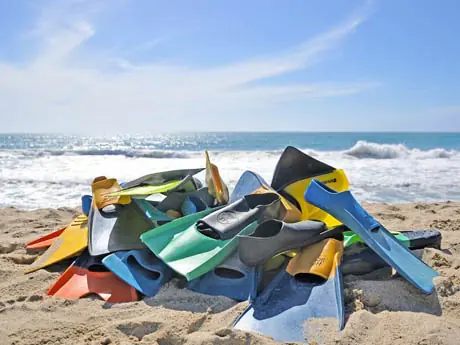
Swimming is anything but intuitive. At the local pool you can see each person swimming with different stroke techniques. It can be overwhelming trying to figure out which mechanics are proper, what is correct for you and how to successfully implement them into your stroke. Perhaps the largest gray area in swimming mechanics is how to properly kick.
What does the kick actually do? To kick or not to kick?
Well, in short, always kick. It's a common misconception of triathletes and fitness swimmers that they will save energy by not kicking. In reality, removing the kick can tow your hips and legs down, creating massive drag. Swimming is all about tempo, and the kick is no exception to this. Maintaining a steady, consistent tempo to your kick allows the movement of the legs to sync with the cadence of your stroke and body rotation. This creates a consistent stroke cycle that smoothly provides forward movement.
Each time your kick pauses, you create significant drag and lose momentum that will have to be rebuilt on the following stroke cycle. A simple trick to ensure that you're employing a rhythmic kick tempo is to allow the big toes to occasionally brush each other while kicking. This physical cue will be hard to ignore and will keep you focused on a steady kick.
More: 5 Tips for Your First Triathlon of the Season
Now let's address those on the opposite end of the spectrum: over kicking.
For many, watching Olympians swim is the only frame of reference they have on swimming technique. Olympic races only last a minute or two, so the athletes kick powerfully to cash in every small ounce of power they can derive at max effort. This kicking style is both exhausting and inefficient. The kick itself may provide only up to 10 percent of your overall propulsion during freestyle, leaving a lot to be desired in the form of power. Kicking harder or faster is not the solution.
The kick is meant to help create balance in body position and the stroke. The legs should be in constant motion, one driven downward and the other upward, creating a counterbalance that helps you stay balanced as you smoothly rotate to the proper degree, side-to-side. Be careful not to scissor the legs open—keep the kick's range of motion to a maximum of 12 inches between your feet.
To kick properly through an effective range of motion, something in the leg must flex. The ankle (plantar flexion) takes this role by actively pointing the toes. This helps to eliminate a commonly problematic bend in the knee seen in swimmers, primarily triathletes. Bending at the knee too much while kicking creates more drag, limits the surface area of the leg driving downward and can unnecessarily speed up the kicking tempo. With pointed toes and minimal bend at the knee, the elongated leg position allows for maximal lift.
More: 10 Sprint Triathlons to Do in 2015
The hip flexors driving the leg down create a lift force that brings your legs higher to the waterline. Maintaining a kick that is high on the water will reduce drag significantly, and allow for optimal streamline positioning.
Even though it's possible to swim freestyle with improper kick mechanics, it won't provide the effective stroke you're likely hoping to achieve.
Remember the three main functions of the kick: tempo, balance and lift. If you can focus on keeping your legs high to the water line with a steady and relaxed kick, you'll be moving through the water swimmingly.
GIVE IT A TRY
To isolate your kick and practice each of the above focuses, try kicking on your side with fins on.
- Lie about 45-60 degrees on your side with the bottom arm extended straight in front of your head and the opposite arm resting long and tight to your side. Imagine your body being frozen during one stroke of freestyle.
- Turn your head to breathe, but engage your core to sustain the rotated, lengthened body position while kicking. Maintain a relaxed, steady kick tempo the entire length of the pool, then follow the drill with a length of freestyle to help integrate the new kick elements into your stroke.
- Alternate sides you drill on to ensure a balanced, symmetrical stroke.
About the Author










Discuss This Article